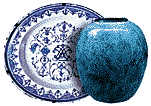Combining modernity, originality, tradition and know-how, Provencal craftsmanship has crossed ages and eras. In the heart of small villages or large towns, Provencal artisans continue to pass on their art and communicate their exceptional know-how. Provencal craftsmanship is known for its famous santons born during the French Revolution, for its famous ceramics and earthenware, for its objects with the scents of Provence, for its glassware and for the sculpture on olive wood.
Leave with a souvenir of your romantic getaway, your unusual stay or your professional event. Meet in the most beautiful boutiques and in the authentic stalls, Provençal know-how, mastery and craftsmanship are in the spotlight and in the spotlight.
In this guide, we briefly introduce you to Provencal craftsmanship and the must-see towns in which you can find the best crafts and the most beautiful works. Rendezvous in the heart of Provence, to meet these artists, artisans and more broadly, Provencal craftsmanship.

In Provence, between Arles and Saint Rémy de Provence, is one of the most beautiful exhibitions of Provencal santons ...
 In many small villages, you will find artisans who have preserved ancestral know-how combining tradition and originality. The
Ceramics of Valauris whose reputation mainly comes from Picasso's visit to this city in 1947. The Earthenware of Moustiers which
owes the quality of its products to the fineness of the clay used. The Ceramics of Salernes: the work of clay in Salernes is a
story that has been perpetuated since the dawn of time. Archaeologists have discovered vases dating back 7,000 years in Salernes.
In many small villages, you will find artisans who have preserved ancestral know-how combining tradition and originality. The
Ceramics of Valauris whose reputation mainly comes from Picasso's visit to this city in 1947. The Earthenware of Moustiers which
owes the quality of its products to the fineness of the clay used. The Ceramics of Salernes: the work of clay in Salernes is a
story that has been perpetuated since the dawn of time. Archaeologists have discovered vases dating back 7,000 years in Salernes.
 The Santon de Provence was born during the French Revolution to replace the cribs in churches closed during this period.
The Santons (santoun: little saint in Provençal) were essentially representations of biblical figures made of dried clay and
painted by hand. The santonniers were then inspired by the characters of Marcel Pagnol whose birthplace (Aubagne) became the
capital of Santon.
The Santon de Provence was born during the French Revolution to replace the cribs in churches closed during this period.
The Santons (santoun: little saint in Provençal) were essentially representations of biblical figures made of dried clay and
painted by hand. The santonniers were then inspired by the characters of Marcel Pagnol whose birthplace (Aubagne) became the
capital of Santon.
 Originally known for its pots, the manufacture of which dates back to the time of the foceans, Biot has become
the capital of artisanal glassmaking. Bottles, decanters, jugs, pitchers and glasses are all traditionally made by mouth
blowing.
Originally known for its pots, the manufacture of which dates back to the time of the foceans, Biot has become
the capital of artisanal glassmaking. Bottles, decanters, jugs, pitchers and glasses are all traditionally made by mouth
blowing. Objects in olive wood are mostly kitchen utensils but also very beautiful sculptures whose style is marked by the natural shape
of the tree. This mode was born from the recovery of the trunks of the olive trees which died by the devastating frosts of 1956,
which affected almost all the orchards.
Objects in olive wood are mostly kitchen utensils but also very beautiful sculptures whose style is marked by the natural shape
of the tree. This mode was born from the recovery of the trunks of the olive trees which died by the devastating frosts of 1956,
which affected almost all the orchards.